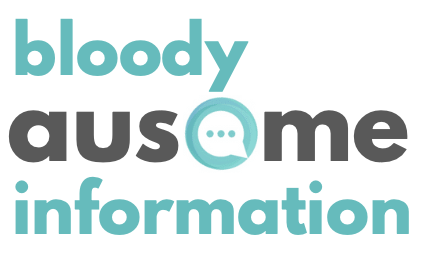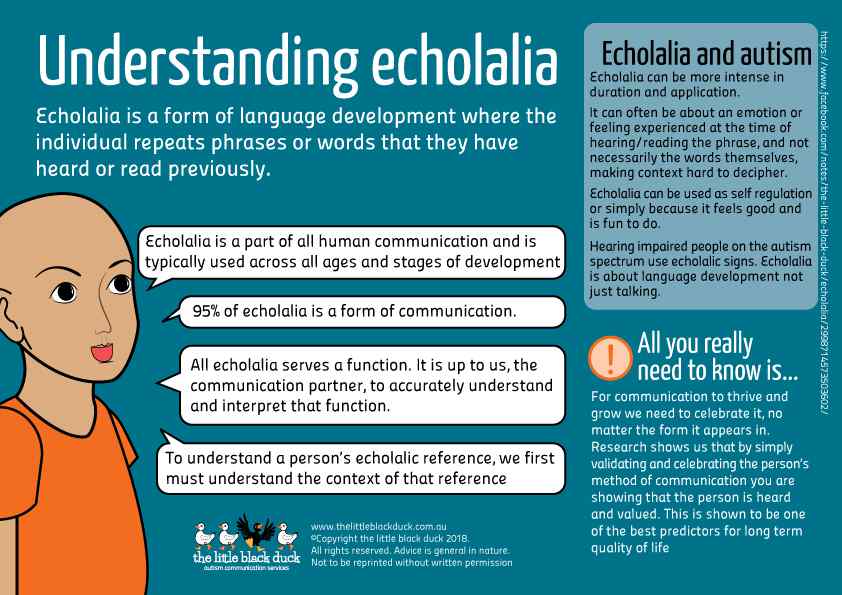What is Echolalia?
Echolalia is the repetition or echoing of words or sounds that you hear someone else say. It's an important step for language development in children commonly seen in toddlers during the first three years.
Echolalia comes from the Greek words 'echo' and 'lalia', which mean 'to repeat speech'. Echolalia is also known as 'vocal stims'.
If echolalia continues in children older than three, it can be a sign that the child is Autistic, has a delayed developmental or learning condition, or all three conditions.
One of the reasons why Autistic children copy or repeat the sounds or words they hear is that they need extra time to process the world around them and what people say to them.
Interactive (or Functional) and Non-Interactive Echolalia
There are two main categories of echolalia: functional (or interactive) echolalia, and non-interactive echolalia, where the sounds or words may only be for personal use instead of communication.
This is attempted communication intended to be interactional, acting as communication with another person.
Examples include:
-
Turn-taking: The person with echolalia uses phrases to fill an alternating verbal exchange.
-
Verbal completion: Speech is used to complete familiar verbal routines that are initiated by others. For example, if people with echolalia are asked to complete a task, they might say “good job!” while completing it, echoing what they’re used to hearing.
-
Providing information: Speech may be used to offer new information, but it may be hard to connect the dots. A mother might ask her child what he wants for lunch, for example, and he’ll sing the song from a lunch meat commercial to say he wants a sandwich.
-
Requests: The person with echolalia may say 'Do you want lunch'? to ask for their own lunch.
Non-interactive echolalia is typically not intended as communication and is meant for personal use, like personal labelling or self-stimulation.
Examples include:
-
Non-focused speech: The person with echolalia says something that has no relevance to the situational context, like reciting portions of a TV show while walking around a classroom. This behaviour may be self-stimulatory (see 'stimming').
-
Situation association: Speech is triggered by a situation, visual, person, or activity, and doesn’t seem to be an attempt at communication. If someone sees a brand-name product in the store, for example, they might sing the song from the commercials.
-
Rehearsal: The speaker may utter the same phrase softly to themselves a few times before responding in a normal voice. This may be practice for the coming interaction.
-
Self-direction: People might use these utterances to walk themselves through a process. If they’re making a sandwich, for example, they might tell themselves to 'Turn on the water. Use soap. Rinse hands. Turn off water. Dry hands. Get bread. Put bread on a plate. Get lunch meat', etc until the process is completed.
Interactive vs Non-Interactive Echolalia
Echolalia is reflective of how the speaker processes information, so recognising the difference between interactive and non-interactive echolalia can be challenging until you get to know the speaker well and understand how they communicate because echolalia may seem completely out of context.
Susan Stokes gives as a great example: If a child with echolalia gets angry at his teacher when recess is over, he might suddenly say 'Go to hell, Lieutenant'! The teacher might later discover that the child had been watching 'A Few Good Men' and had used a phrase he knew was tied to anger to convey his feelings at that moment.
While his response seemed out of context, he had a reason to use that phrase to communicate.



